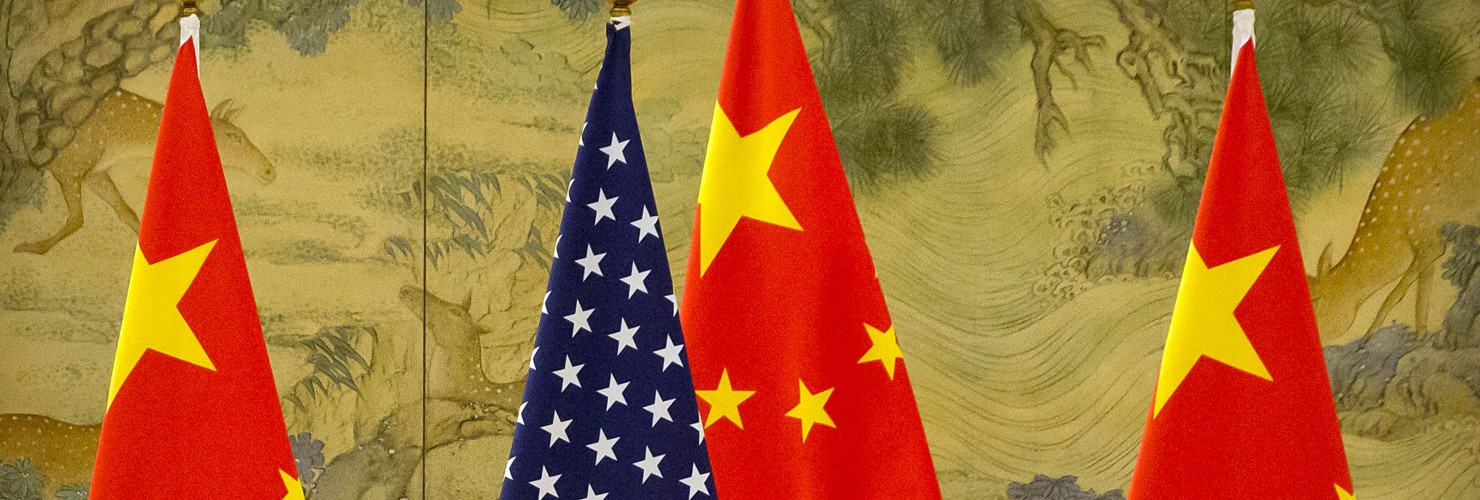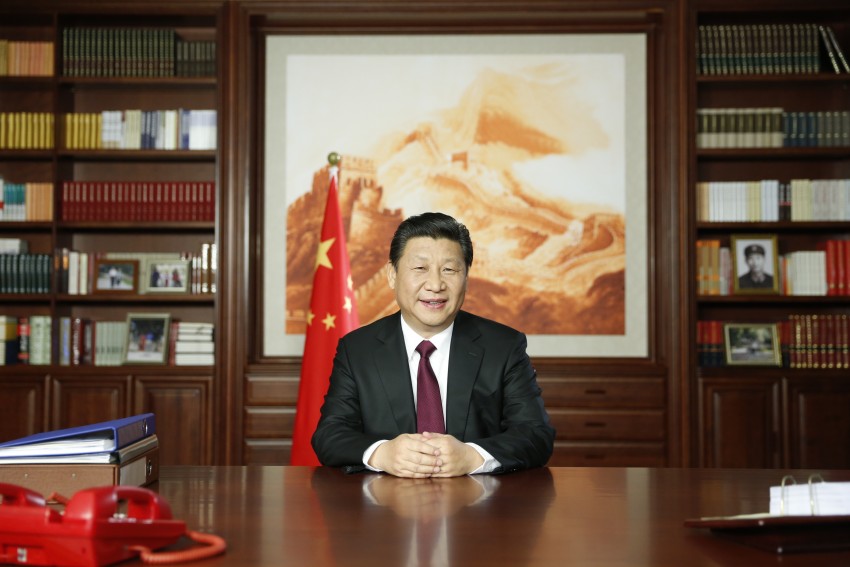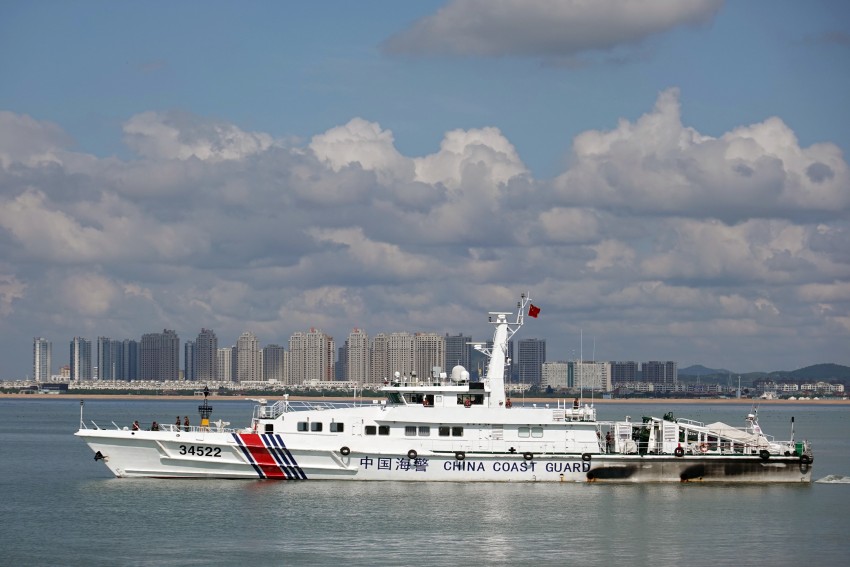

MERICS China Security and Risk Tracker
1/2021
Focus Topic: Staying the course - China's Global approach in 2021
At the superficial level, Beijing set a warmer diplomatic tone at the start of 2021 by calling for a reset in China-US relations after the inauguration of President Joe Biden on January 20. Although it still blamed Washington for the current tensions and warned that China would not back down on its core interests, Beijing seemed to be offering the new US administration a route out of the frictions created by Donald Trump’s trade wars and aggressive rhetoric and a return to the pre-Trump status quo.
China’s ambassador to the United States, Cui Tiankai, said it was time for “dialogue and cooperation” so the two sides could “together with other countries and the international community, advance the noble cause of world peace and development”. A “new window of hope is opening”, as foreign minister Wang Yi put it.
In Western capitals, Beijing’s international standing took a hit in 2020, due to its initial coverup of the Covid-19 pandemic, its crackdown on Hong Kong and its hardline “wolf warrior” diplomacy. These statements by Beijing have therefore raised modest hopes that China may tone down its rhetoric and reduce its international assertiveness, to seek a return to better relations with the United States. This, however, is unlikely. In fact, Beijing is doubling down on its policies and approach. Recent toned-down rhetoric is little more than the Chinese Communist Party (CCP) telling the world – and the West in particular – what it wants to hear.
Beijing feels 2020 was a relatively successful year
In a series of early year speeches by top party leaders, Beijing made clear the central leadership is largely satisfied with China’s global role in 2020 and with its positioning as it enters 2021.
President Xi Jinping’s new year address, laced with references to China’s unyielding national spirit, listed some of China’s 2020 achievements. From overcoming the Covid-19 pandemic and achieving positive economic growth, to eradicating extreme poverty, and engaging with the international community to pursue a “human community with a shared future for mankind,” 2020 was deemed a hard but successful year for China and the party.
Minister of Foreign Affairs Wang Yi reached a similar conclusion in his review of China’s diplomatic efforts in 2020. Acknowledging the difficulties China had faced, he argued that China helped to build consensus on a global response to Covid-19, making more friends in the world in the process, and helping protect and advance the shared interests of the developing world. Notably, Wang also issued a strong defense of China’s much criticized “wolf warrior” diplomacy – often seen in Western capitals as fueling the growing international backlash against China’s international behavior. In Wang’s words, part of the distinct Chinese style of diplomacy is that China treats “friends with hospitality and partners with cooperation,” but it also “ fights against wicked people.”1
These statements are primarily aimed at a domestic audience, so any admissions of error would undermine their purpose. Nonetheless, contrary to the widespread perception in Western capitals, their tone clearly shows that Beijing sees itself as having successfully taken on a more important role on the international stage, taking advantage of the United States’ withdrawal and the global Covid-19 pandemic.
Institutionalizing China’s international assertiveness
Foreign policy begins at home, and China is no different in this regard. To understand the trajectory of China’s international behavior it is therefore important to look beyond rhetoric and statements targeted at international audiences. Internal goals, guidelines and pronouncements, especially those meant for domestic or internal party consumption, often provide the best indications of where China’s foreign policy is headed.
2021 is a milestone year for the CCP. It marks the 100th anniversary of the party and the completion of the first centenary goal – the achievement of a moderately prosperous society. We can expect to see the promotion of a number of further goals intended to return China to its rightful place as a global power by 2049. Indeed, policy pronouncements and statements of intent have been in plentiful supply in recent months.
The Fifth Plenum of the Central Committee of the CCP, held in October 2020, offered a first glimpse of China’s main upcoming policy priorities and targets. It saw the release of the “Proposals on Formulating the Fourteenth Five-Year Plan for National Economic and Social Development (2021-2025) and the Long-term Goals for 2035,” which will form the basis of China’s 14th Five-Year Plan. In matters of defense of diplomacy, neither this document nor the slew of internal party commentary that followed signaled any significant changes in policy directions. Rather, they called for an acceleration of current themes and initiatives, from the BRI and the reform of the global governance system, to PLA modernization.
The focus remained squarely on the common theme of strengthening China’s national security in order to face down the mounting external challenges to the party’s rule and its development plan for China, and to protect China’s overseas interests more effectively.
Recent revisions to two important laws – China’s National Defense Law and Coast Guard Law – also struck a similar tone. The new National Defense Law gives the Central Military Commission the power to mobilize military and civilian resources to defend China’s “national and development interests,” which could well be applied to Chinese investments or projects overseas.
Vague language is also used in the revised Coast Guard Law. This law, which for the first time allows China’s Coast Guard to fire against foreign vessels, is meant to apply to activities in China’s – undefined – “waters under national jurisdiction”, a term that is likely to include China’s claims in the East and South China Seas, supporting Beijing’s increasingly assertive behavior in its neighborhood.
Despite the apparent toning down of rhetoric vis-à-vis the United States, where it matters Beijing is signaling that it intends to continue on its current course. Barring any last-minute surprises, this approach will be reinforced at the March 2021 National People’s Congress, when the next Five-Year Plan will be approved.
Top issues to watch in 2021
What does it mean for Europe?
2020 was not an easy year for China, and 2021 is not likely to be easy either. The party leadership, however, still sees “time and momentum” as being in China’s favor, as the “East rises and the West is in decline”. Although China is entering a new phase this year, as Xi likes to put it, its foreign policies are likely to remain remarkably similar. The party’s and China’s core interests and fundamental policies have not changed and, as such, 2021 is likely to see a continuation and even an acceleration of China’s current international behavior. The following are the top issues to watch this year. They will pose clear challenges to Europe’s interests and security in the short-term:
- Tensions in the Indo-Pacific region: the CCP is unlikely to want to disrupt its 100th anniversary celebrations with open conflict in its neighborhood. Despite this, Europe should expect to see increased tension in the East and South China Seas, now that the Coast Guard has been given expanded powers to operate in the region, as well as ramped up pressure on Taiwan.
Continued deployments of naval assets to the region by the United States, Australia and some European countries, including France, the UK and Germany, will anger Beijing. This could potentially lead to diplomatic retaliation, especially if Beijing considers that Western countries are coordinating in order to contain China. The Chinese military is similarly likely to maintain its presence along the China-India border, despite the recent agreement to disengage, which could trigger further clashes below the threshold of conflict.
- Assertive or coercive diplomacy: one of Beijing’s main concerns this year is likely to be the prospect of a new coalition among liberal democracies and like minded states to confront China’s worst behavior in the international arena. We can expect to see China continue its “divide and rule” approach to Europe. “Wolf warrior” diplomacy will play an important role, as it serves to shape European public narratives and to sustain perceptions that it is both impossible and unwise for other countries to try to block Beijing’s pursuit of its own interests.
China will also use this opportunity to promote its governance model as superior to liberal democracies, much as it did in the first wave of the Covid-19 pandemic. However, the rhetoric may be toned down slightly to match the new spirit of multilateralism that Beijing is – at least outwardly – calling for these days. It is also possible that European countries will become the targets of China’s coercive diplomacy, as Australia was in 2020.
- Influence in international organizations: 2021 is likely to see further efforts by Beijing to expand its influence inside the UN system, given the number of upcoming leadership changes at important UN agencies. China will not pass on this opportunity to build coalitions of developing and like-minded countries against the West, either by seeking to get its own candidates elected or by lining up support behind the candidates of friendly countries. By increasing its clout at the UN, China can further prevent international scrutiny of its behavior and continue to play a major role in setting global standards in areas ranging from cybersecurity and transport to telecommunications and agriculture. Beijing’s success inside the system also bolsters CCP claims that its governance model is superior.
- Transatlantic relations: Beijing will be watching developments closely as the Biden administration seeks to revive the transatlantic relationship after the damage of the Trump era. Beijing is likely to regard two major events as litmus tests for the emergence of a transatlantic anti-China bloc; the 2021 NATO Leaders’ Summit, which will once again focus on China, and the results of the EU’s review of the implementation of the 2019 EU-China Strategic Outlook. In the run-up to these events, Europe should expect Beijing to attempt to exploit existing divisions within NATO and the EU. European countries should prepare to see China use a range of familiar tools and tactics to influence their decision-making, such as cyber warfare, disinformation, elite capture, economic pressure and legal warfare, among others.
Foreign and Security Policy
The top priorities remain national security and party control of the armed forces
In October 2020, the party released its blueprint for the upcoming 14th Five Year Plan, which will be released in March. Although this document tends to be more domestically focused, it contained some references to China’s foreign and defense policies, in line with the CCP’s tightly held belief that China’s development, and the party’s survival, depend upon its ability to protect China’s national security.
The proposals call for further expansion of the BRI, better protection of the rights and interests of Chinese companies overseas, and active participation in reforming the global economic governance system. They also reaffirm the timeline for the completion of PLA modernization – which must be basically achieved by 2035.
The last three months have also seen Beijing issue new regulations to strengthen the party’s control over the PLA and to prepare it for its new role as a global top-tier military. The Central Military Commission (CMC) released new guidelines on joint combat operations, kicking off a process to renew the military’s operational doctrine that is likely to stretch over several months, or possibly the next few years.
The Politburo revised the regulations on political work in the armed forces on November 30. Unlike previous editions of these regulations, the revised version is focused almost exclusively on Xi’s ideological formulations, omitting most references to previous party leaders.
The trend towards stronger party control was also evident in revisions to the National Defense Law, which came into effect on January 1. The revised law weakened the role of the State Council in favor of the party’s CMC, which got the power to mobilize military and civilian resources to defend China’s “national and development interests”.
The Coast Guard – an agency which has been part of the People’s Armed Police since 2018 and is charged with enforcing China’s maritime claims – also got a new law, effective on February 1. The new law broke precedent by allowing China’s Coast Guard to use force against foreign vessels.
Defense Policy and Partnership
China focuses on strengthening relations with its neighbors
These trips were opportunities for China to reaffirm ties with its neighboring countries amid ongoing tensions with India and functioned as a warning shot to Delhi about its influence in the region. Wei vowed to strengthen China’s military relationship with Nepal, and he left Islamabad with a new MoU on China-Pakistan military cooperation.
Wei once again defended China’s position on the South China Sea issue at the 14th ASEAN Defense Ministers' Meeting, which was held online on December 9. He warned the United States not to get involved and cautioned regional countries against entering alliances with the United States. He promised to advance the two-decades long negotiations on the Code of Conduct, which ASEAN and China aim to complete in 2021.
However, negotiations may be disrupted by the February 1 military coup in Myanmar. Beijing has gone to extraordinary lengths to avoid criticizing the coup, whereas other countries have rushed to condemn it. But the coup is not entirely good news for China, which has clear strategic and economic interests in Myanmar and wants it to be stable. Beijing also cultivated close ties with Aung San Suu Kyi and her party in recent years. Now, it must forge a new alliance with the military, which has historically been a complicated partner.
The PLA restarted its participation in joint drills with foreign militaries in December after a pause caused by the global pandemic; the PLA Air Force’s participated in the Shaheen-IX exercise with Pakistan and the second ever strategic patrol with the Russian air force, flying over the East China Sea, took place in late December. The choice of Pakistan and Russia as exercise partners is telling, given their position as China’s only regional partners.
In a rare example of US-China cooperation amid ongoing tensions, the two countries held the 16th iteration of their Disaster Management Exchange in mid-November – albeit online this year. The Exchange is rare for being an engagement between the two militaries that has not fallen prey to tensions over the last few years.
China finally ratified an extradition treaty with Turkey that was signed in 2017. Human rights groups, and others, fear that this extradition treaty could threaten the safety of the many Uighurs based in Turkey. Ankara is yet to ratify the treaty and the government is reportedly facing opposition inside the parliament.
Power Projection and Territorial Disputes
China’s power projection in the Indo-Pacific continues
The last months of 2020 and beginning of 2021 saw China continue its power projection activities in its neighborhood and beyond. The trend for increasing power projection shows no signs of abating, regardless of the inauguration of President Biden. US-China competition in the Indo-Pacific theater and beyond seems likely to continue.
The PLA conducted several exercises in the East and South China Seas in the run-up to the new year, after almost a year of delays to its regular training program caused by the Covid-19 pandemic. They included three 10-day exercises held simultaneously in waters south of Hainan in late December.
Beijing has also ratcheted up pressure on Taiwan. China conducted over 130 missions into Taiwan’s air defense identification zone (ADIZ) from mid-September to the end of 2020, making this an almost a daily occurrence. Two large-scale incursions into the island’s ADIZ on January 23 -24 forced the Biden administration to issue its first statement on the Taiwan issue. The statement reaffirmed the “rock-solid” commitment of the United States to Taiwan and urged Beijing to cease putting pressure on Taiwan.
China-India border tensions have also continued. Beijing has made clear that it considers the border dispute and its bilateral relations with India to be separate issues. It has urged New Delhi to work to patch up ties, while refusing to compromise on the border. An agreement to disengage along the Line of Actual Control in the Pangong Tso area was reached on February 10, after nine rounds of talks at the corps commander level. The agreement may contribute to calming tensions for the time being. However, it is just the beginning. It remains to be seen whether it will be fully implemented and whether China and India will dismantle the infrastructure they have built in the area.
China’s participation in UN peacekeeping operations has remained steady. China’s total deployment hovered around the 2,500 personnel mark between December and January, as it has since 2017. The PLA Navy also continued its counterpiracy operations in the Gulf of Aden, deploying its 37th escort task force to the region in January.
Geopolitical Competition
Washington seeks to mobilize allies as Beijing counters with warnings
Xi gave a series of high-profile speeches in international forums extolling China’s record in pandemic management and the virtues of multilateralism – a perspective bolstered by China’s success in handling the Covid-19 pandemic and weathering the economic fallout. Xi spoke at the 3rd Paris Peace Forum; the 12th BRICS Summit; the 15th G20 Leaders’ Summit; and the World Economic Forum meeting in Davos.
A common theme in Xi’s speeches was that the world should respect China’s choice of development model, coupled with offers to share China’s model and expertise. Xi also set out China’s red lines by warning US President Biden against building an alliance against Beijing that he said could risk igniting a new Cold War.
Washington is also trying to mobilize allies to stand up to China – a move that is guaranteed to anger Beijing. Shortly after his confirmation, new US Secretary of Defense Lloyd Austin called on Japan and South Korea to team up with the US in the Indo-Pacific. Meanwhile, Australia signed a landmark agreement with Japan to conduct more joint military exercises in the Indo-Pacific, a move clearly targeted at Beijing.
China was also an important component of the NATO 2030 reflection paper published in December. Beijing sees NATO as a US-centric outfit and a tool that may be used by Washington to contain China’s rise; it swiftly hit back against the Alliance’s proposed new focus on China.
Meanwhile, China’s attempts to gain further influence in international organizations had mixed results. While Beijing was successful in ensuring the continued inclusion of its concept of "a community of shared future for humankind" in a resolution about weapons in outer space, it failed at having its preferred candidate chosen to lead the UN Human Rights Council.
Looking forward: What to watch in the months ahead
• March 4-5: The National People’s Congress will discuss and approve the government work report, the annual budget, as well as the 14th Five-Year Plan (2021-25). This will reveal China’s foreign and defense policy goals and priorities for the next few years, as well as the budget that will be earmarked for foreign policy and defense in 2021.
• March: Europe’s new approach towards relations with China could become visible again in March, when the European Commission is expected to review the implementation of the 10 action items included in the 2019 EU-China Strategic Outlook.
• June 11-13: The leaders of the G7 nations will gather in Cornwall under the UK’s presidency of the group. The presence of Australia, India and South Korea as invited guests suggests that the summit will likely discuss the Indo-Pacific and the challenges posed to liberal democracy by China’s rise.
• TBD: The German Navy is expected to deploy a frigate to the Indo-Pacific by the summer. The deployment is a first step in the implementation of the new Indo-Pacific Guidelines, which call for Germany to play more important role in the region. Details of the mission are yet to be confirmed, though port calls in Australia, South Korea and possibly Japan are expected. It remains to be seen whether the German frigate will sail through the South China Sea.
- Endnotes
-
1 https://www.fmprc.gov.cn/web/wjbzhd/t1844078.shtml. Own translation from the original Chinese (对待恶人,我们也有斗争之道). The official English translation is considerably toned down, and it reads “we also have to stand our ground when dealing with those who are not so friendly”.


